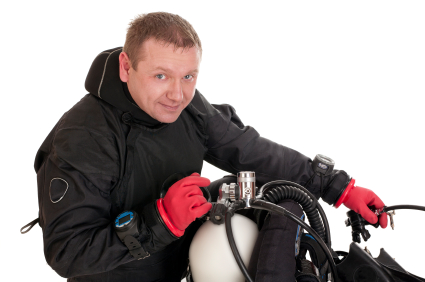*This is a guest post Michelle Arduini
With water reaching a max temp of 12C in the ‘heat’ of Vancouver summers, a dry suit really is a necessity here to enjoy some of the spectacular finds underwater.

I’m no stranger to cold water diving, having done both my Open Water and Advanced Open Water in and around the Cape of Storms – Cape Town, South Africa – where the average water temperature on the Atlantic side was a balmy 10.5C in a 7mm wetsuit. The biggest difference, though, is the air temperature. 10.5C doesn’t seem so cold when you get to warm up in 30C air; 8C is just plain cold any time of the year and the 15C days don’t help things.
When I got back to North Vancouver, I headed down to the local dive shop that I’d never visited before, having only learnt to dive while I spent 18 months travelling the world. The crew was, as most dive shop crews are, friendly, knowledgeable, and super excited about diving. In a matter of moments I had been signed up, sized up and sent away with the requisite manual and DVD.
I managed to get through the book in one lunch break and an evening reading session, learning all about dry suits; particularly the way a dry suit is meant to insulate you: instead of your body heat warming a layer of water between your skin and wetsuit, the dry suit provides a layer of air, or gas, in between your skin, undergarments and the suit itself that your body can warm and use to keep itself heated. Since water cools faster than air, and you can alter the number and insulation of the undergarments you wear, the dry suit is meant to keep you far warmer than even a 10mm wetsuit in colder waters.
Finally it was time for the pool session, and once I’d put on minimal undergarments for the 25C pool water and managed not to get tangled in the suspenders of my suit, I zipped the double waterproof zippers, loaded on the weight (20 pounds!) and jumped into the deep end.
Unlike wet suit diving, where the BCD is used to provide buoyancy control, a dry suit has a low pressure inflator hose, which is commonly hooked up in the centre of the chest. Air is pumped into the suit to provide the insulating layer, and also make the suit more comfortable. Diving in an uninflated dry suit is basically like pulling on a giant garbage bag and jumping in the water: you may be dry, but feel like you’ve been wrapped in air-tight cling film and left for dead. The water pressure forces any air remaining in the suit out of the exhaust valve (usually located on the left shoulder/bicep), and makes the suit more than skin tight.
Since the depth in the pool was not enough to really inflate the suit to a comfortable level, we had a short swim around our instructor lead us through the requisite skills. Thomas, my buddy, and I needed to prove that in the cumbersome suits, hoods, and gloves, we could remove and re-attach our inflator hoses, weight belts and BCDs. Then we had to show how we would rescue ourselves if we experienced excess gas in the legs: rolling and tucking into a ball to force our legs down and our left shoulders up. All the twisting and turning certainly didn’t leave me completely dry, as my neck seal leaked a bit during the maneuver, but overall, it would be a small price to pay for being able to avoid a runaway ascent on dive day.
Mainly, the pool session is meant to get you acquainted with the ins and outs of the dry suit, including getting used to adding and releasing gas to and from the suit instead of the BCD for buoyancy compensation. Overall, I felt comfortable in the water, despite the bulky suit, and looked forward to my first dives on the West Coast.

